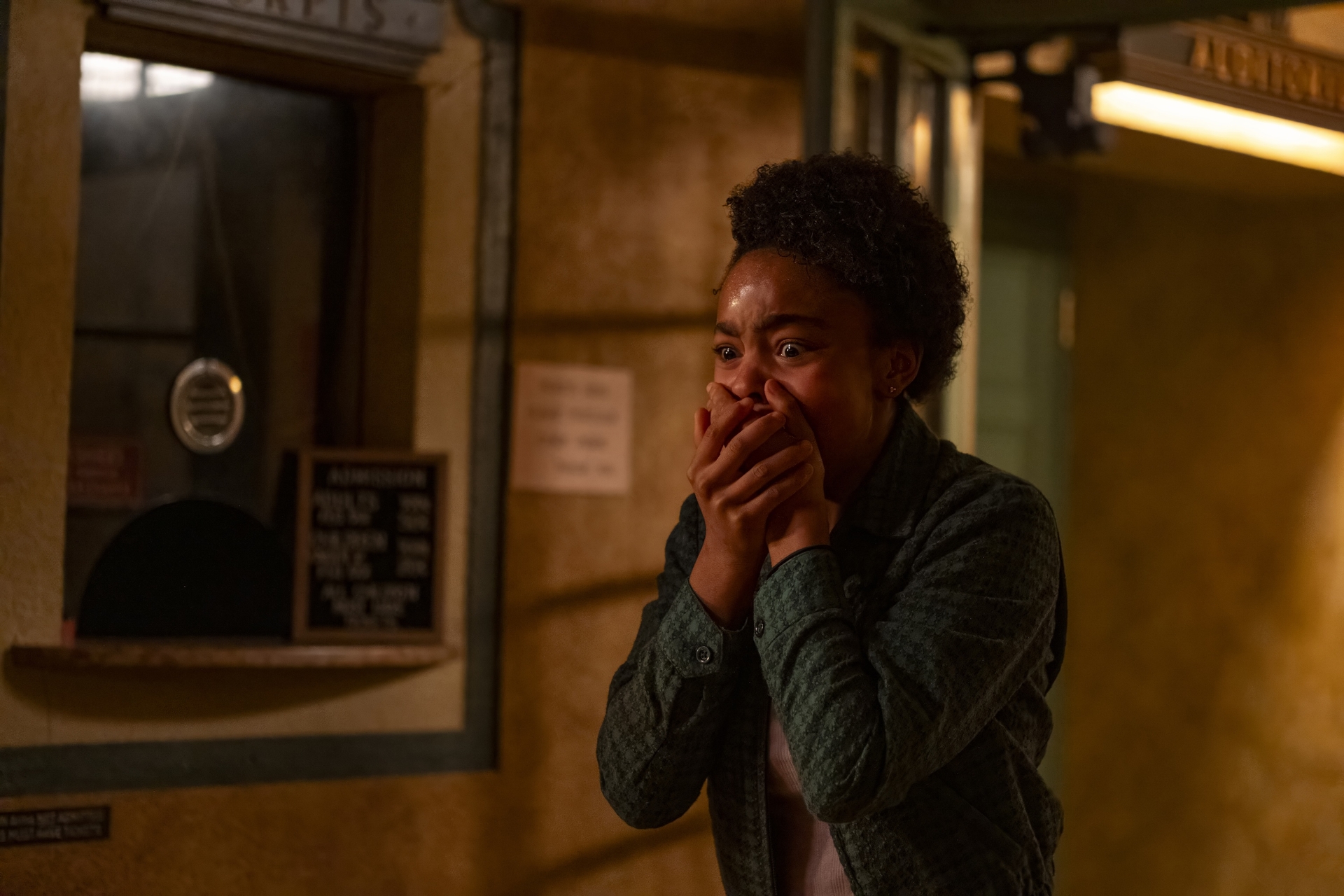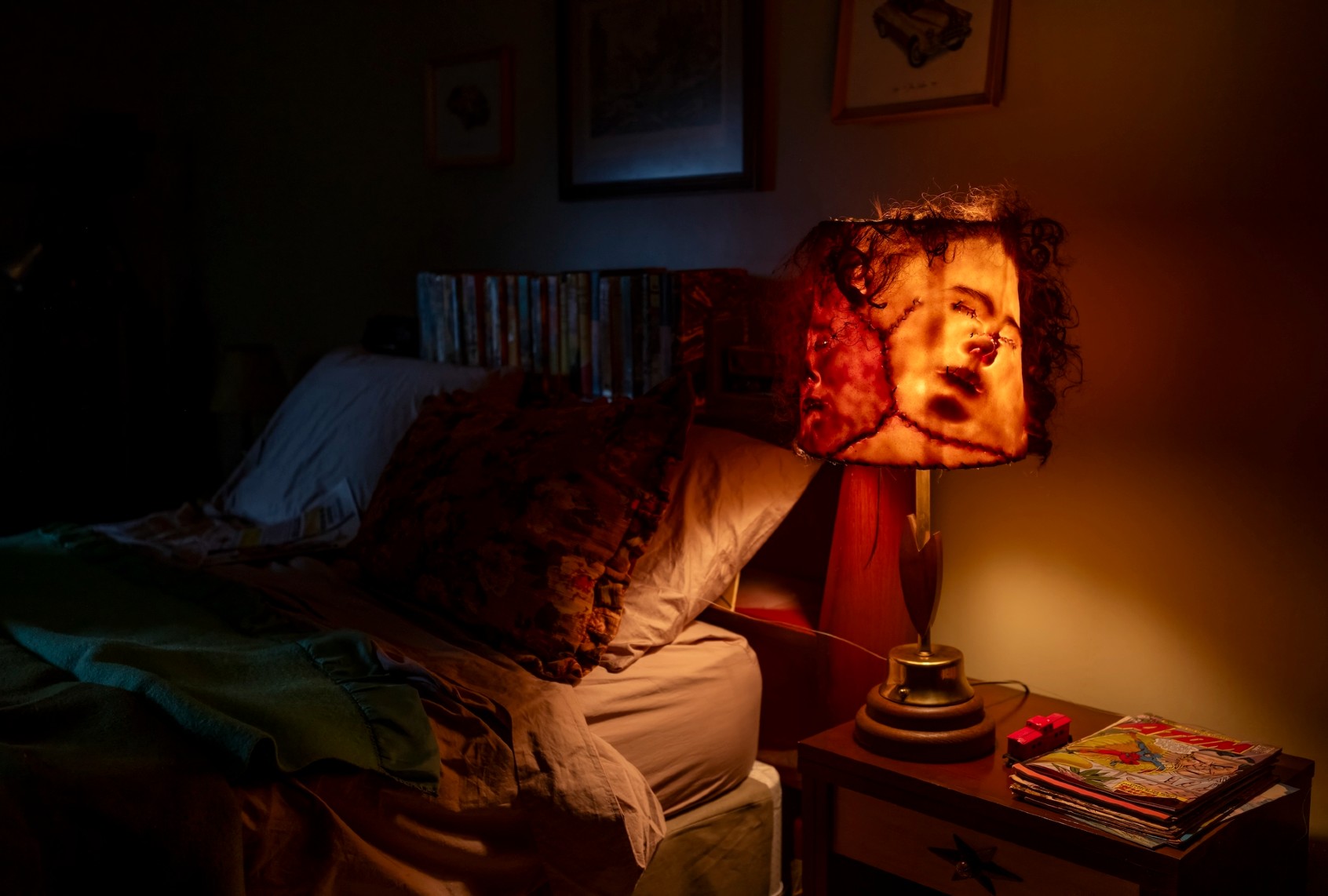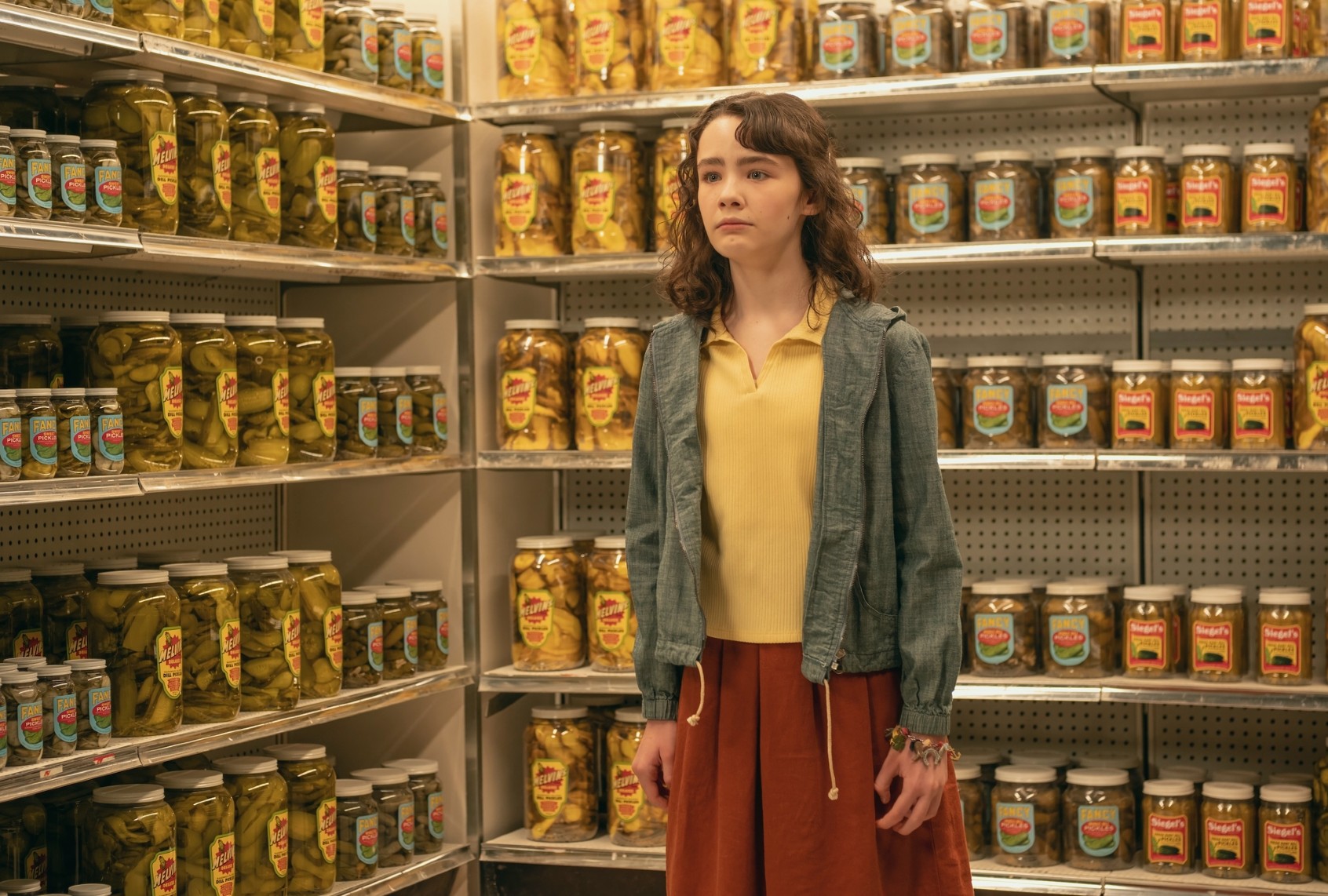For the entity called Pennywise, the demon that haunts Derry, Maine, fear is the best seasoning for flesh. That’s why this evil enjoys feasting on children most of all. All the townsfolk are susceptible to Its predation, but kids are easier to scare.
Judging by how the entity has manifested in the first two episodes of “It: Welcome to Derry,” a person is right to wonder whether the ghoul hunts youngsters because of what they have in common with it. Pennywise surfaces every 27 years. In the interim, it lurks underground in stasis, almost like a fetus in the womb.
We tend to picture that as a peaceful state. But for Ronnie Grogan (Amanda Christine), who suddenly finds herself trapped inside a membrane prison, engulfed in fluid and drowning, it’s anything but. In one of the most horrifying sequences in the thriller’s second episode, “The Thing in the Dark,” Ronnie tries to find refuge from her worries by hiding in her bedroom, under the covers, only to be disturbed by the repetitive thump-thump of a loud heartbeat. Then the bedsheet turns pink and veiny, covering her with goo as she wildly scratches at it. Water rises around her, suffocating her screams until she claws her way free, sliding across the floor.

(Brooke Palmer/HBO) Amanda Christine as Veronica “Ronnie” Grogan in “It: Welcome to Derry”
Ronnie doesn’t yet know why Derry’s ancient horror is stalking her, but longtime Stephen King readers may recognize how attractive her guilt is to It. Since she thinks the reason three of her classmates are missing, having snuck them into the theater where her father, Hank (Stephen Rider), works as a projectionist, she also blames herself for placing Hank in the local cops’ crosshairs. Long before that, though, Ronnie’s mother died while bringing her into the world. So it wasn’t her bed she was escaping, but a giant, monstrous version of her dead mother’s uterus.
Television writers, most of whom are men, have long fixated on the perceived trauma inherent to pregnant people pushing a fully formed human from their bodies.
“You tore me apart, Ronnie. You came out of me and ripped me right open. Why’d you do it? All I wanted was to hold my baby . . . and you killed me. Like you killed those kids. And you’re gonna kill your father,” says Ronnie’s momster. “They’ll come for him. They’ll take him away . . . and he’ll FRYYYYYY!”
With that, the horrifying slit between Mama’s legs transforms into a chomping mouth full of sharp teeth, reeling in a struggling Ronnie by the umbilical cord tethering them. The girl fights with her legs, hands, and eventually her teeth, chewing herself free of it.
Two episodes in, “Welcome to Derry” has showcased some of the squishiest, grisliest scenes on TV. That two of them involve hideous versions of childbirth isn’t accidental. By the time Ronnie escapes her mother’s vagina dentata, we’ve already watched another kid, Matty Clements (Miles Ekhardt), sustain a bloody attack by a mutant newborn with a tumorous extra head and bat wings. That abomination pops out of an unsettlingly cheerful woman whose husband swoops in to offer the hitchhiking boy a ride. By the time the homicidal aberration tears out of her like an angry insect from a rotten apple, Matty’s fate is already sealed.
Television writers, most of whom are men, have long fixated on the perceived trauma inherent to pregnant people pushing a fully formed human from their bodies. Notice how an expectant person’s water breaking always happens at the least convenient and often alarming times.

(HBO) “It: Welcome to Derry”
Giving birth on “The Handmaid’s Tale” or even “The Pitt” may end in joy, but there’s always a surge of peril and dread in the mix. If you’re a Targaryen on “House of the Dragon,” childbirth is as likely to be a nauseous, chunky event as a joyous one.
“Welcome to Derry,” a prequel to the events of Stephen King’s 1986 novel, seems especially fond of using nativity to midwife atrocities, although body horror in general is a defining trait of the show. The same episode featuring Ronnie’s gooey night terror ends with her friend Lilly Bainbridge (Clara Stack) seeing dismembered parts of her dead father wiggle at her from pickle jars on the grocery store’s shelves.
Predictably, those vessels break open so his grey flesh can supernaturally merge into a foul lump of distorted features and tentacles, binding Lilly while a creepy voice asks, “Got a kiss for daddy?” Lilly’s nightmare doesn’t involve the dead father consuming her, but its violative creepiness eats at you even so.
All this aligns with King’s strange habit of writing about bodies, especially women’s bodies, as if they’re treacherous wonderlands. Throughout his writing, King outs himself as a breast man via an array of female characters boobing along boobily as a function of going about their day.
Start your day with essential news from Salon.
Sign up for our free morning newsletter, Crash Course.
His first novel, 1974’s “Carrie,” centers on a heroine whose telekinetic powers awaken with the onset of her first menstrual period, which, from one lens, could be viewed as empowering. Then again, the experience humiliates Carrie to such an extent that she slaughters everyone at her prom and limps off to die in the woods, so . . . hooray, feminism?
King’s works are full of creative violence toward women, which, to be fair, is a genre staple. But some conceits stampede through profoundly repugnant swamplands, sinking into straight-up stereotyping in the process. One of the main protagonists in “The Dark Tower” series, Susannah Dean, is a Black woman with dissociative identity disorder. She battles a rapey demon by calling forth the personality of a previous, angrier Black woman to screw it roughly enough to scare it into submission. She gets knocked up in the process, but, luckily for her, passes the gnarly demonic birthing duties off to a succubus (that, for a time, turns Susannah, a double amputee, into a white woman with legs).

(Brooke Palmer/HBO) Amanda Christine as Veronica “Ronnie” Grogan in “It: Welcome to Derry”
All this aligns with King’s strange habit of writing about bodies, especially women’s bodies, as if they’re treacherous wonderlands.
Then there’s the nasty premise of King’s short story “Dedication,” in which a pregnant Black hotel housekeeper is compelled by a bruja to consume the seed of a racist (but highly successful!) author by licking his bedsheets so her unborn son can inherit the man’s talent.
Heaven help me, I could go on, but it’s probably sufficient to remind you of a major turning point from King’s 1986 novel that has never been recreated in any of the TV or movie adaptations of “It,” and never should be. It involves the sole girl in The Loser’s Club rallying the team back to unity by having sex with all the boys. In the book, these kids are around 11 years old.
Yes, in King’s universe, lady parts are trouble (trouble! trouble!) with a capital “T,” and that rhymes with “V, and that stands for the vagina as a portal for evil to enter the world – as it does in the very first moments of “Welcome to Derry.” The Bat Baby that disappears Matty returns later in the premiere as the kids watch a screening of “The Music Man” that Ronnie facilitates for them. In its famous showstopper, “Ya Got Trouble,” con man Harold Hill warns the River City townsfolk about supposed dens of immorality, and the children notice Matty in the crowd, holding a bundle. It’s the tiny monstrosity, of course, which emerges into the theater, grows giant-sized and devours most of Matty’s friends.
As the show’s executive producers, Andy and Barbara Muschietti, have explained in other interviews, the show’s transgressive images aren’t solely for shock’s sake. An insightful Film Paradise video essay explains its meaning as coded to Derry’s reigning anxieties in 1962, specifically the ravages of nuclear fallout and radiation. Phil Malkin, one of Matty’s friends who doesn’t make it out of the theater alive (played by Jack Molloy Legault), is highly suspicious of what the military is doing at the base near town.

(Brooke Palmer/HBO) “It: Welcome to Derry”
The mutant baby monster is the manifestation of that fear, in the same way Lilly’s visitation is the congealed manifestation of her torment. The vile births and dismembered bodies are a realization of the evil gestating within Derry.
“And the reason it feels so wrong, so instantly iconic,” the Film Paradise analyst explains, “is because it takes something that should mean hope, a child, and turns it into a mouth” — one that compels the child heroes to run, and challenges viewers to keep from looking away.
Pregnancy is a wonder, even through the finale when a parent pushes their newborns into the world, and those tiny humans distend the most intimate parts of their bodies. There’s a beauty in that, people say; I have no firsthand knowledge. But if there were any chance of changing my mind and taking the plunge, watching “Welcome to Derry” has permanently exorcised any phantom longings. Besides, Derry represents America, where life is scary enough as it is.
New episodes of “It: Welcome to Derry” air 9 p.m. Sundays on HBO and stream on HBO Max.
Read more
about horror on TV and in film


